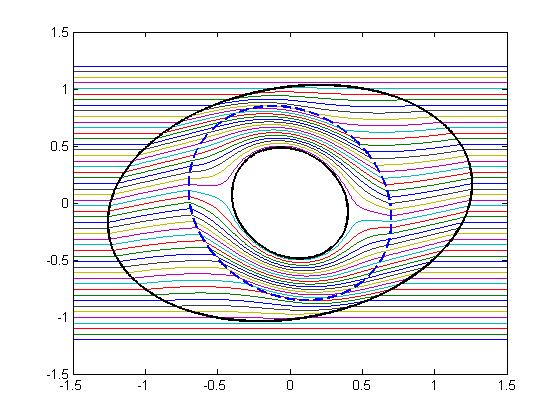Andrew Norris
Mechanical & Aerospace Engineering
Rutgers University
Piscataway, NJ 08854
norris@rutgers.edu
Popular version of paper 3aPA5
"Generalized acoustic cloaking theory"
Presented 11:15 a.m. on Wednesday November 12, 2008
156th ASA Meeting, Miami, FL
Acoustic cloaking is the ability to surround an object with a material that can make sound waves travel through the cloak as if the object, and the cloak, were not there at all. The possibility of cloaking has attracted great interest, especially since a prototype cylindrical device for cloaking (electromagnetic) microwaves was demonstrated in 2006. But there has not yet been any practical demonstration of acoustic cloaking, although the possibility is not ruled out by the laws of physics governing sound waves. The challenges in acoustic cloaking are quite different than for electromagnetic waves, and until very recently it was not even clear what type of materials would be required to achieve a realistic cloaking effect for sound waves. This talk gives a complete description.
This talk defines and describes the entire class of materials, called acoustic metafluids, that can cause acoustic cloaking. Theses metafluids have the fundamental property that one region of an acoustic metafluid can mimic the acoustic effects of a different region. We show that the material properties for a given cloak geometry can be selected from within a wide range of values. Unlike the situation in electromagnetic cloaking, the type of acoustic metafluid is far more general, and non-unique, with the result that cloaks of equivalent effectiveness can be made of different metafluids.
Before this work it was thought that an acoustic cloak must be made from a fluid that acts like a normal liquid under pressure, but has unusual inertial features, called anisotropic inertia. We show that the fluid in the cloak can have normal (isotropic) inertial properties if it behaves in some ways more like a solid in its reaction to stress. The metafluid has to be able to support a biaxial state of stress and strain, which might be achieved using specially designed granular-like substances.

Caption of Figure 1: Acoustic waves are unaffected by the presence of a cloak. The figure shows how acoustic rays travel through the cloak emerging on the far side unperturbed. The cloaked region is the inner white oval and the cloak itself occupies the region inside the large outer ellipse. The dashed line demarcates between two types of cloaking materials: the inner core of the cloak is made from an acoustic metafluid with isotropic density. The outer cloak has some material that has anisotropic mass density. The choice of the inner core material guarantees that the total mass of the cloak is finite. The outer material is required to fit the non-circular outer boundary. This example is a simulation with properties chosen to illustrate that, in general, an acoustic cloak can have any desired shape if the materials are selected appropriately.

Caption of Figure 2: Acoustic metafluids could display unusual physical effects. This shows a metafluid with isotropic density that has preferred biaxial stress directions shown by the arrows. Metafluid in a container is in equilibrium under the force of gravity (acting down), but unlike normal acoustic fluids like water, the forces (stress) required to keep the sides in equilibrium are not pure pressure but have some shear components. Also, the free surface of the metafluid is not horizontal.

Caption of Figure 3: This shows a possible microstructure for a microscopic rectangular region of the metafluid in Figure 2. This particular microstructure, known as a pentamode material, comprises a regular array of small beads such that each is in lubricated point contact with its three neighbors (2D).